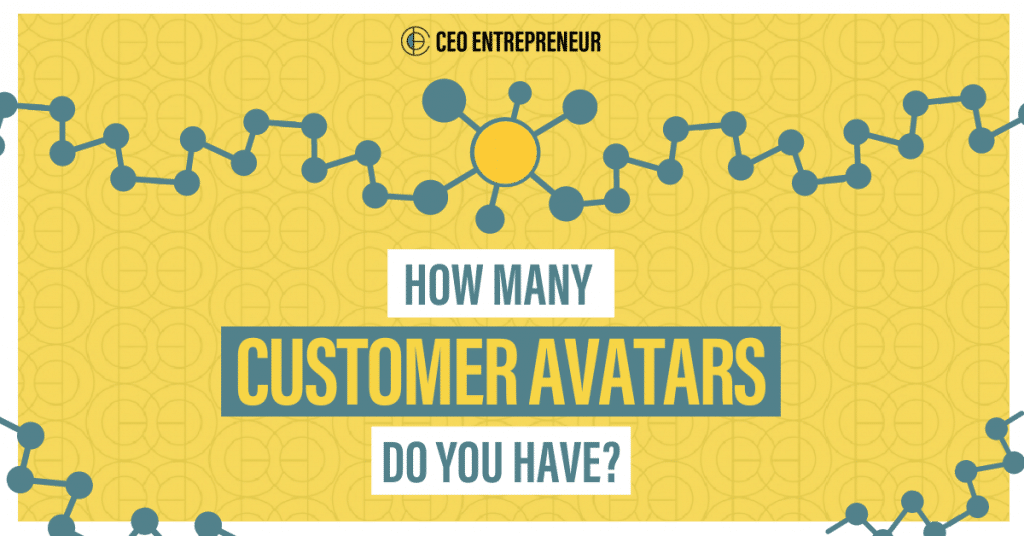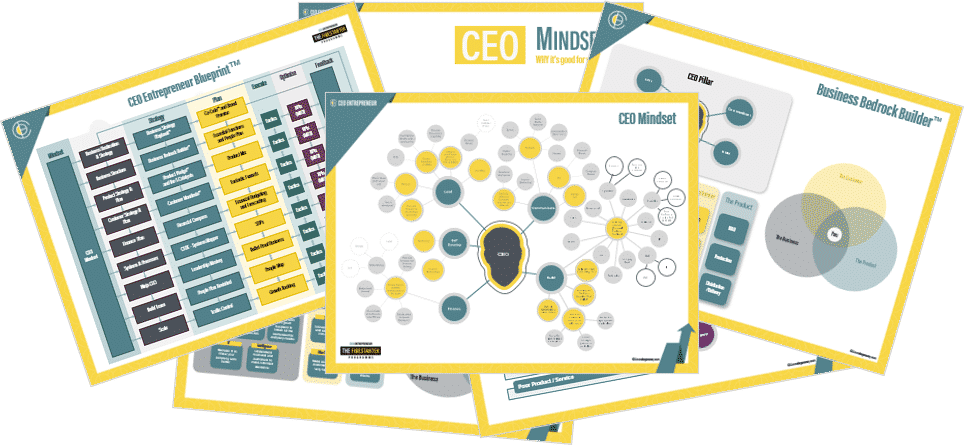
The Right (and Wrong) Way to Use Customer Avatars
Customer avatars are a key ingredient in any business plan. Without them, you’ve got no idea what you’re doing or who you’re doing it for.
Creating a business without customer avatars is like putting a load of great ingredients together and then throwing them on the hob without a pan. It’s going to be messy and you’re going to get burned.
So, I want to explain to you, why the common advice about customer avatars is often delivered the wrong way round.
And I also want to explain the right way to use customer avatars to grow your business successfully.
Let’s get started…
Hit play on the video below or read on for more…
The fatal flaw in starting with a niche
I want to start by saying very clearly – avatars and niches are very good and very helpful.
Niching down on your avatar is great when it comes to marketing to prospects, as it means you can make your message consistent and crystal clear to whoever you’re targeting.
However, when you’re trying to develop your business model or your product/service, doing so around just one avatar is a bad idea because you stifle your opportunities for scaling up.
Building your product/service around just one person means limiting yourself, when really you want to be building your product/service around a target market comprised of segments and avatars within those segments.
That means starting broad and niching down, not starting niche and broadening out.
How often do you hear business advice that goes something like:
“Pick a niche and an avatar, then find out everything about them.”
So you do. You find out that your avatar is a 27-year-old woman called Amy with a three-legged cat, an interest in mountain biking, and who dyes her hair purple every summer.” If you develop your product for her and sell it to her… There’s only one Amy. Where do you go after that?
When you want to validate whether your business works or not, selling it to one person is not enough. Depending on your product, you need 3/5/10 independent sales before you’ve validated your business model and can confidently scale it.

Start with a target market and segment it from there
I mentioned it briefly in that last section, but let’s look at the right way to start – with a target market – in some more detail now.
If you want to define your target market, you need to identify four things:
- Demographic (age/gender)
- Geographic location (local/regional/international)
- Behaviour (have they bought from you/a similar product before?)
- Psychographic (their values, loyalties, culture)
Only once you have identified your target market can you segment it into niches and, from there, define some avatars.
Your segments, from that target market, will be variants of those four identifying factors, but they need to pass a few stress tests first.
Making sure your segments are right for your business
To stress test your segments, to give you the confidence that your product/service will sell and will work, you need to analyze their:
- Size
- Uniqueness
- Accessibility
That means looking at how many people are within a segment you’ve chosen (are there enough of them?), seeing how clearly you’ve defined them (or whether they’re a disparate group joined by a thin thread), and how easy it is for you to reach them (with your marketing and your product/service).
If you feel confident that they pass those tests, you’ve got yourself a segment and you can start looking at avatars within it.
How to work with your avatars
Picking your avatar means you need to understand everything there is to know about them, understanding their thoughts and fears, and how you can alleviate their fears in a valuable way.
One of the key things you need to do with (and for) your avatar, is define the way you’re going to market to them. That means creating content that speaks to their fears, that solves their problems, that engages them, and entertains them.
Customer avatars have been used for decades and decades in business, but they have shifted and changed over time. In the tech world, especially, we are in the throes of ‘user journeys’.
User journeys look at the way each of your avatars would use your product/service, rather than simply identifying who they are and then trying to sell to them. This is all part of the move towards product-led business models, where the product does a lot of the sales work for you.
I’m going to ask you to start with one – just one – but you can do so safe in the knowledge that they are one of many that you know exist within your target market.
Consider your stakeholders, too
Even if you get things spot on with your marketing and content for your avatar, there’s still the chance it could all be scuppered by someone else. Imagine you’ve done a perfect job of selling to your avatar, but then they go to their partner about it and get a very firm ‘no’ in response.
These stakeholders are just as important, and you need to create content and marketing materials that help them address these issues if they do arise.
I can share an example from a much larger scale, too…
When I was consulting, I worked with a firm who used a certain make of laptops for all of their staff. People got on fine with them, but the IT department loathed them – they were hard to fix, parts were scarce, and they had a laundry list of complaints.
When it came to renewing the contract, they switched to a new provider.
Even though the IT department didn’t have a direct involvement in the procurement process, they had a direct impact on it.
Subtle changes make a big difference
Do you see the subtle difference between this approach and the ‘traditional’ approach espoused by so many business leaders?
Rather than starting with this single avatar, we’ve started much more broadly and homed in on this one avatar. It’s a bit like putting a spotlight on a crowded stage – we can see this one avatar clearly and focus our attention on them, but that doesn’t mean the others aren’t there. When we want to move the spotlight, we can do it.
The common advice would have you shining a spotlight on the stage at random and then getting all the other avatars to leave!
I hope this has been illuminating (see what I did there?) for you and that now you’re ready to define/redefine your target market, your segments, and your avatars.
It’s going to make all the difference to your ability to scale your business.
Have you watched the video – Watch Me Grow from Scratch – How to Start a YouTube Channel from Nothing – yet? Make sure to check it out for more on your customer avatar.
SUBSCRIBE to my YouTube channel so you don’t miss out on future videos.



